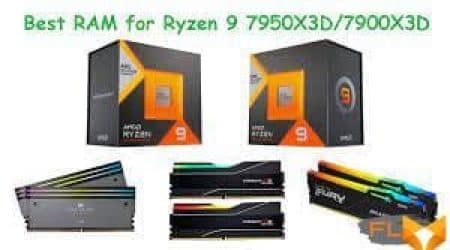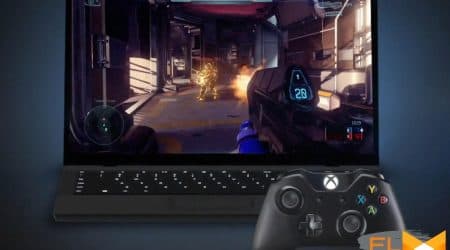The landscape of modern computing is dominated by fierce competition between leading manufacturers, each offering remarkable processors designed to elevate performance and enhance user experience. Choosing the right processor can be daunting, especially for enthusiasts and professionals who seek the best possible experience for gaming, content creation, or multitasking. With two outstanding contenders in the realm of processing power, making an informed decision is crucial.
On one side, we have a formidable option that boasts impressive core counts and advanced architecture, appealing to those who prioritize multitasking and speed. On the other hand, a rival solution shines brightly with its optimized single-thread performance, making it an attractive choice for gamers and users who demand rapid responsiveness in their applications. As these two heavyweights go head-to-head, it’s essential to delve deeper into their specifications, performance metrics, and real-world usage to ascertain which one truly stands out.
In this analysis, we will explore the intricacies of both selections, examining their strengths and weaknesses, as well as considering various real-world scenarios to help potential buyers understand what each brings to the table. Whether you’re looking to upgrade your current setup or build a new powerhouse, our detailed comparison aims to guide you toward the most suitable option for your specific needs.
Overview of Ryzen 9 3900X Features
This section provides an insight into the key attributes and strengths of a prominent processor option in the market. With a focus on performance and efficiency, it stands out as a compelling choice for enthusiasts and professionals alike.
Core Specifications
- Architecture: Built on a modern architecture that enhances computational capabilities.
- Core Count: Features a robust count of cores, allowing for superior multitasking and parallel processing.
- Thread Count: Supports a high number of threads, effectively managing complex workloads.
- Base and Boost Clock Speed: Equipped with impressive clock speeds that ensure swift processing during demanding tasks.
Technological Enhancements
- Advanced Fabrication: Utilizes a refined manufacturing process for improved power efficiency.
- Enhanced Cooling Solutions: Compatible with various cooling systems, ensuring optimal thermal performance.
- Support for High-Speed Memory: Facilitates the use of fast RAM, boosting overall performance capabilities.
- PCIe 4.0 Support: Offers enhanced bandwidth for next-generation graphics cards and storage solutions.
Overall, the features of this processor make it a significant contender in the market, appealing to those who require a blend of power and efficiency in their computing tasks.
Intel Core i9 9900K Specifications Explained
This section provides a comprehensive overview of the key attributes that define a prominent processor model, showcasing its performance capabilities and architectural features. Understanding these specifications can greatly assist in making an informed decision when selecting a powerful computing solution.
Key Features and Performance Metrics
The processor boasts 8 cores and 16 threads, enabling exceptional multitasking and processing efficiency. With a base clock speed of 3.6 GHz and a turbo frequency that can reach up to 5.0 GHz, it delivers impressive performance in both single-threaded and multi-threaded applications. This agility is further enhanced by a robust thermal design power (TDP) of 95 watts, ensuring optimal performance without excessive heat generation.
Cache Size and Memory Support
This model includes a sizable 16 MB Intel Smart Cache, promoting fast data access and improved overall efficiency. It supports dual-channel memory architecture, accommodating up to 64 GB of DDR4 RAM with speeds reaching 2666 MHz. This combination of cache and memory capabilities ensures that the processor can handle demanding applications and gaming scenarios seamlessly.
Performance Benchmark Comparisons
When assessing the capabilities of two leading processors in the market, it is essential to consider various performance benchmarks. These metrics provide insights into how each chip handles different workloads, ranging from gaming to productivity tasks. By evaluating their performance in real-world scenarios, potential buyers can make more informed decisions based on their specific needs.
Gaming Performance
- Frame Rates: One of the most critical factors for gamers is the frame rate achieved in various titles, particularly in demanding scenarios.
- Resolution Scaling: Assessing performance at different resolutions (1080p, 1440p, 4K) helps to determine how well each unit can utilize graphics cards.
- Latency: Measuring input and system latency can highlight how responsive each processor is during gaming sessions.
Productivity and Multitasking
- Rendering Speed: In tasks such as video editing or 3D rendering, the efficiency of each processor can be evaluated through time taken to complete benchmarks.
- Multi-Core Performance: Analyzing how well each chip performs in multi-threaded applications is vital for professionals relying on simultaneous tasks.
- Power Efficiency: Understanding power consumption during intensive tasks can provide insight into thermal management and overall efficiency.
These benchmarks collectively offer a comprehensive view of the strengths and weaknesses of the processors, guiding users in their choice based on intended applications.
Power Consumption and Thermal Design
When evaluating performance in computing devices, energy efficiency and heat management play crucial roles. These factors not only influence operational costs but also determine the longevity and stability of a system. Understanding how each processor handles power distribution and thermal output is essential for users who want their machines to run optimally under various workloads.
Power Consumption
The amount of energy a processor consumes can significantly impact overall system efficiency. In general, one contender is known for its advanced manufacturing processes, which yield lower power draw while delivering impressive performance levels. Conversely, the other option often showcases substantial power requirements, especially when pushed to its limits during intense tasks like gaming or video rendering. Evaluating the thermal design power (TDP) ratings can provide insights into expected consumption patterns under typical operating conditions.
Thermal Management Solutions
Efficient thermal management is vital to prevent overheating and ensure smooth operation. One option utilizes a well-designed heatsink and fan assembly, allowing for effective heat dissipation, even under heavy loads. The other model, while featuring robust cooling solutions, may rely heavily on aftermarket components to achieve optimal thermal performance. Users looking for a quieter experience may find that one solution inherently runs cooler, resulting in reduced noise levels during usage.
Ultimately, selecting between these two processors will depend on balancing power consumption with thermal efficiency to meet individual needs and preferences.
Gaming Performance: Which CPU Wins?
When it comes to gaming, the choice of processor plays a crucial role in delivering an immersive experience. The competition between two notable contenders has sparked debates among enthusiasts regarding which option provides superior performance when it comes to running the latest titles.
Frame rates are often the primary metric for determining gaming prowess. In many cases, one processor demonstrates a slight edge in this department, especially in titles that are heavily reliant on single-thread performance. This leads to smoother gameplay and enhanced responsiveness, particularly in fast-paced environments. On the other hand, the rival contender showcases its strengths in multi-threaded scenarios, often excelling in games optimized for multi-core utilization.
Resolution also plays a significant role in this comparison. At lower resolutions, the disparity in performance may be more noticeable, allowing one processor to shine brightly. Conversely, at higher resolutions, the gap tends to diminish as the focus shifts more towards the graphics card, making both options comparable in real-world performance.
Ultimately, the decision rests on specific gaming preferences and scenarios. Players who prioritize high frame rates at lower resolutions might favor one product, while those who engage in diverse gaming experiences might find the other to be more aligned with their needs. In the end, understanding the unique strengths of each processor is key to making an informed decision for an optimal gaming setup.
Best Use Cases for Each Processor
When selecting a powerful microprocessor, it’s crucial to understand the specific scenarios where each model excels. Different designs cater to various computing needs, making it essential to identify the best applications for each option.
Processor A: Ideal Scenarios
This model is particularly advantageous in tasks requiring raw processing power and multithreading capabilities. Some of the optimal use cases include:
- Content Creation: Video editing and 3D rendering tasks benefit significantly from the increased number of threads and cores.
- Gaming: While performing admirably in gaming, its capacity for high frame rates at higher resolutions can provide a streamlined experience.
- Software Development: Developers working on complex applications and using virtual machines will notice improved performance.
- Heavy Multitasking: Users who often run multiple demanding applications simultaneously will appreciate the smooth performance.
Processor B: Recommended Applications
This alternative processor shines in different areas, predominantly where single-core performance and power efficiency are essential. Suitable applications are as follows:
- Gaming: Known for delivering exceptional frame rates in single-threaded scenarios, making it a popular choice among gamers.
- General Productivity: Office tasks, browsing, and media consumption are handled efficiently with excellent responsiveness.
- Streaming: Ideal for content creators who focus on live streaming while maintaining quality.
- Compact Systems: Due to its power efficiency, it suits smaller builds where thermal management is critical.
Q&A: Amd ryzen 9 3900x vs intel core i9 9900k which high end cpu to buy
How does the Intel Core i9-9900K compare to the Ryzen 7 3700X in terms of single-core performance?
The Intel Core i9-9900K offers better single-core performance compared to the Ryzen 7 3700X, making it a superior choice for tasks that rely heavily on single-threaded applications, such as gaming. Intel’s chip has a higher base clock speed and can be overclocked for better performance in high-end gaming and workstation applications. In benchmarks like Cinebench and Geekbench, the i9-9900K typically scores higher in single-core performance, while the Ryzen 7 3700X, based on AMD’s Zen 2 architecture, excels in multi-threaded workloads due to its 8 cores and 16 threads.
What makes the Ryzen 7 3700X a strong competitor against the Intel Core i9-9900K for workstation tasks?
The Ryzen 7 3700X, with its 8 cores and 16 threads, is built on AMD’s 7nm Zen 2 architecture, which provides excellent multi-core performance, making it highly efficient for workstation tasks like encoding, rendering, and multitasking. Paired with an X570 motherboard, it supports PCIe 4.0, offering faster data transfer rates, which is an advantage over Intel’s i9-9900K. Additionally, the Ryzen 7 3700X comes with the Wraith Prism cooler, allowing for decent cooling without the need for an aftermarket solution, making it a cost-effective high-end CPU for workstation use.
How does the Intel Core i9-9900KF differ from the Intel Core i9-9900K?
The Intel Core i9-9900KF is similar to the Intel Core i9-9900K in terms of specs, performance, and overclocking potential. However, the key difference is that the i9-9900KF lacks integrated graphics (iGPU), meaning it requires a discrete GPU for any graphical tasks. Both CPUs feature 8 cores, 16 threads, and the same high-end performance, but the i9-9900K comes with Intel’s integrated graphics, making it a more versatile option for users who may not immediately need a dedicated GPU.
Why is the Ryzen 9 3900X considered a better CPU for multi-threaded tasks compared to the Intel Core i9-9900K?
The Ryzen 9 3900X, with its 12 cores and 24 threads, outperforms the Intel Core i9-9900K in multi-threaded tasks such as rendering, encoding, and heavy multitasking. Built on AMD’s 7nm Zen 2 architecture, the Ryzen 9 3900X offers more cores and threads, making it better suited for high-end workstation tasks and real-world performance in applications that can fully utilize multi-core CPUs. While the i9-9900K excels in gaming due to its higher single-core performance, the Ryzen 9 3900X is the better CPU for users who need more cores for productivity.
How does the 12-core Ryzen 9 3900X compare to the Intel i9-9900K in terms of real-world performance?
The 12-core Ryzen 9 3900X offers superior real-world performance in multi-threaded tasks compared to the Intel i9-9900K. With 12 cores and 24 threads, the Ryzen 9 3900X outperforms the 8-core Intel i9-9900K in applications like video rendering, encoding, and other productivity workloads. AMD’s Ryzen 3000 series, including the 3900X, is based on the second-generation Ryzen architecture, providing higher L3 cache and better efficiency in multi-core tasks. However, the Intel i9-9900K remains strong for single-core performance, making it a top contender in the gaming world.
Why is the Ryzen 3000 series, specifically the Ryzen 9 3900X, considered a breakthrough for AMD CPUs?
The Ryzen 3000 series, including the 12-core Ryzen 9 3900X, was a breakthrough for AMD CPUs due to its second-generation Ryzen architecture, improved L3 cache, and support for PCIe 4.0. This series significantly closed the performance gap between AMD and Intel CPUs, offering excellent multi-core performance for desktop users in both gaming and workstation tasks. The Ryzen 9 3900X provides high efficiency in multi-threaded applications, making it ideal for users looking for powerful desktop solutions in the 3000 series.
How does the Intel i9-9900K perform in gaming compared to Ryzen processors?
The Intel i9-9900K remains one of the best gaming CPUs due to its high single-core performance, which is crucial for gaming tasks. Intel chips like the i9-9900K excel in games that rely on fewer CPU cores but demand high clock speeds per second. Although Ryzen processors like the Ryzen 9 3900X offer more cores and better performance in multi-threaded tasks, the Intel i9-9900K is still favored for the best gaming performance in desktop systems, especially when paired with high-end GPUs like the GeForce RTX 2080 Ti.
What improvements did the second-generation Ryzen processors bring compared to previous Ryzen chips?
The second-generation Ryzen processors, such as the Ryzen 9 3900X, brought significant improvements over previous Ryzen chips. These improvements include higher L3 cache, better power efficiency, and enhanced multi-threaded performance, making them more competitive with Intel CPUs. The Ryzen 3000 series also introduced support for PCIe 4.0, offering faster data transfer speeds and making it ideal for high-performance desktops. These advancements allowed AMD to compete more effectively in both gaming and productivity, especially in comparison to Intel’s high-end CPUs like the i9-9900K.




